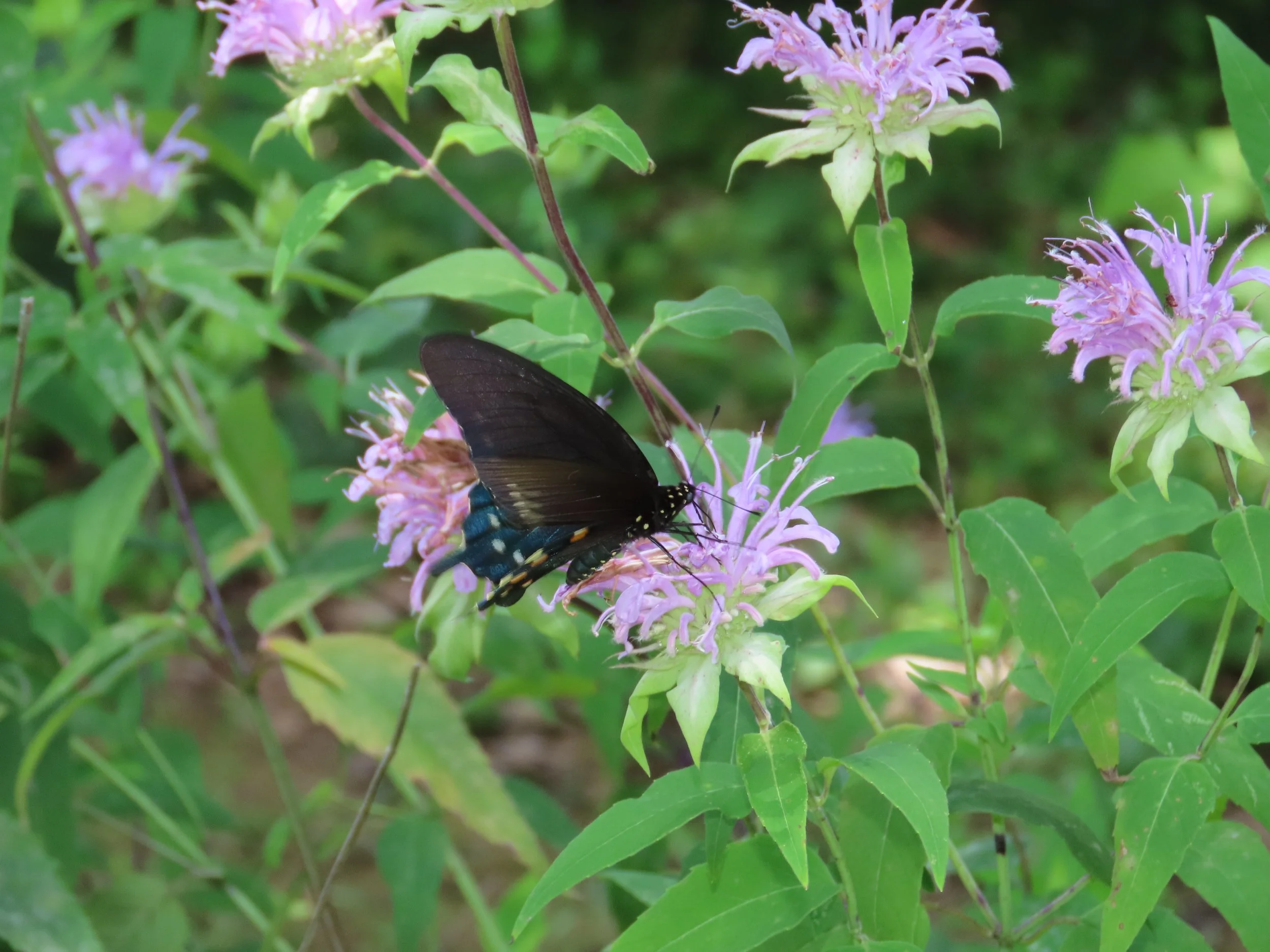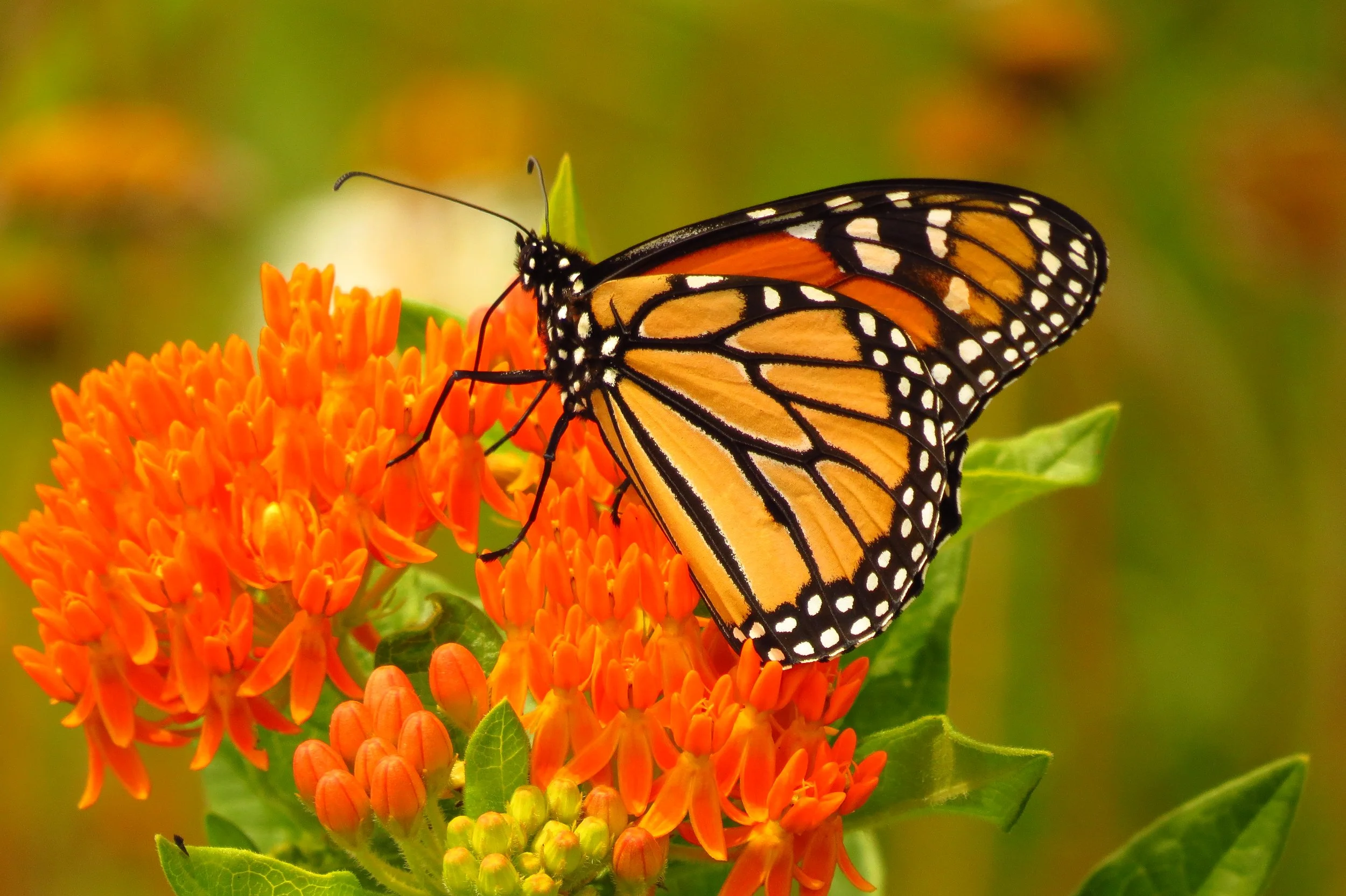Butterfly Basics: How do you tell a butterfly from a moth?
/This is a common question at my work place. Telling a moth from a butterfly is pretty straight forward, once you have looked closely at each. I will list some basic differences between the two, however there are exceptions to several of these:
1) Butterflies have clubbed antennae, moths have feathery antennae.
If you look at a butterfly's antennae they are shaped like a golf club or a hockey stick. On the other hand, a moth's antennae resemble a bird feather. Typically male moths have broader, more elaborate antennae.
Coral Hairstreak with clubbed antennae.
Rosy Maple Moth with feathery antennae.
2) When a butterfly caterpillar pupates, it will form a chrysalis, every time. When a moth caterpillar pupates it will do one of two things. The caterpillar will spin a cocoon from the outside in, and then the caterpillar pupates inside the cocoon. Or the moth caterpillar will bury itself underground and pupate there. Butterflies never spin a cocoon. The only things that make cocoons are moths and space aliens!
Moth cocoon, pupa that was within, and final skin shed of caterpillar that was inside cocoon.
Monarch butterfly chrysalis.
3) Moths at rest typically keep their wings spread, whereas a butterfly at rest holds their wings over their back. However, the spreadwing skippers (butterflies!) at rest keep their wings spread like a moth!
Harvester butterfly displaying 'normal' butterfly resting position.
Big Poplar Sphinx moth displaying "normal" resting position.
Wild Indigo Duskywing (a spreadwing skipper) at rest with wings spread.
4) Butterflies tend to be diurnal, which means they are active during the day. Moths are normally active at night, or said to be nocturnal. However, the clearwing moths tend to be active during the day! And butterflies have come to my sheets at night!
Hummingbird Clearwing Moth, active during the day.
Red-banded Hairstreak butterfly that came to my sheet during a night of moth lighting!




























